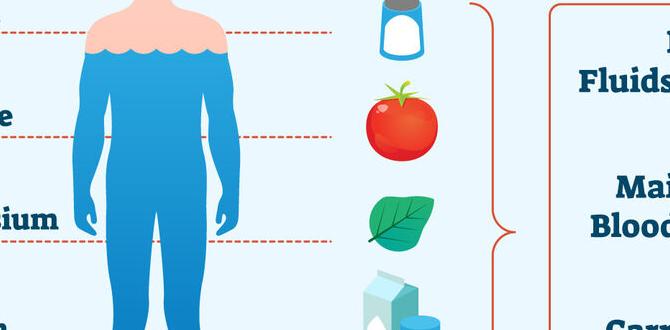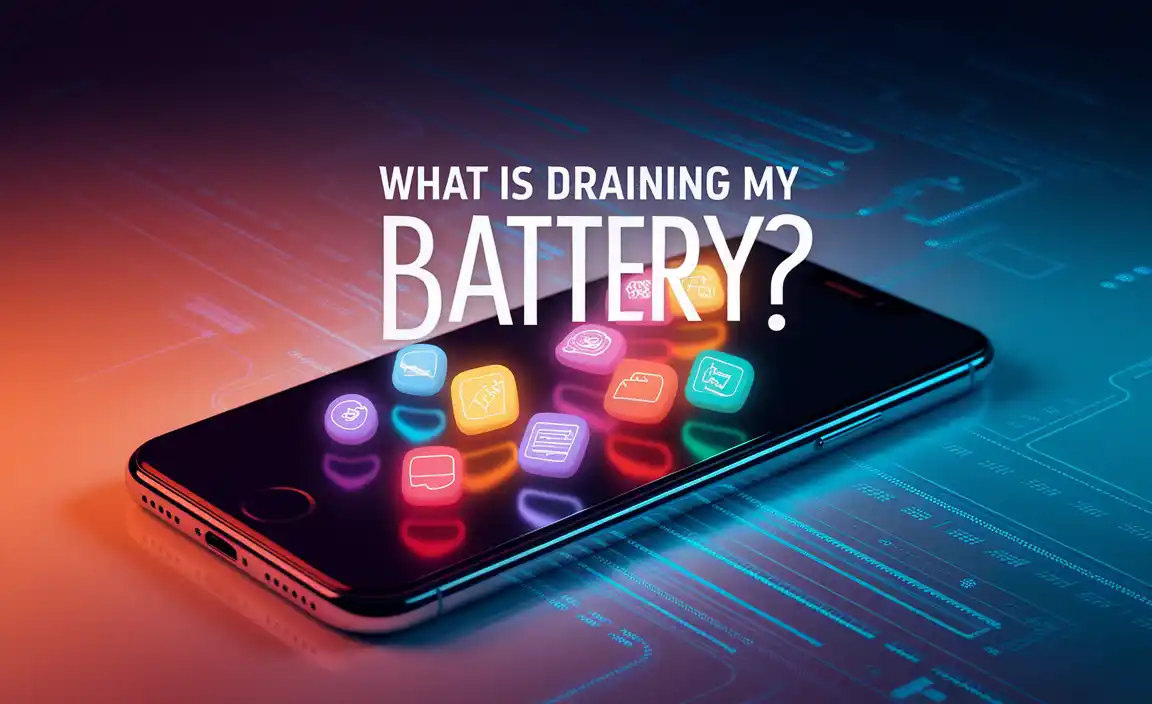Quick Summary:
A dead car battery usually stems from leaving lights on, a faulty alternator, old age, extreme temperatures, or parasitic drain. Fixing it often involves a jump-start, a trickle charger, or replacing the battery, with regular checks ensuring it’s in good health. Understanding these common issues helps you get back on the road quickly.
A car battery refusing to start your engine is a frustrating experience. It often happens at the most inconvenient times, leaving you stranded. Thankfully, this is a common problem, and most drivers can understand and resolve it with a little guidance. This article will break down why your car battery might die and what simple steps you can take to fix it. We’ll cover everything from what might have caused the issue to how you can prevent it from happening again.
Why Did My Car Battery Die? Common Culprits Explained
When your car won’t start and you suspect the battery, it’s natural to wonder what went wrong. Batteries are the heart of your car’s electrical system, powering everything from the starter motor to your car’s radio. When they fail, it’s a major inconvenience. Let’s explore the most common reasons for a dead car battery so you can get to the root of the problem and find the right solution.
1. Lights and Accessories Left On
This is perhaps the most straightforward reason for a dead battery. Even if you’re just popping into a store for a quick errand, forgetting to turn off your headlights, interior lights, or even the radio can drain your battery over time. Modern cars are designed to be efficient, but any electrical component left drawing power will eventually deplete the battery’s charge, especially if the engine isn’t running to replenish it.
What to Look For:
- Did I leave any interior lights on?
- Are the headlights or parking lights still on?
- Was the stereo or infotainment system left running without the engine?
2. The Age of Your Car Battery
Car batteries have a lifespan, typically lasting between 3 to 5 years. Like any component, they wear out over time. The chemical reactions inside the battery that store and release power become less efficient as the battery ages. Corrosion can build up on the terminals, and the internal components can degrade, reducing its ability to hold a charge.
Typical Lifespan Factors:
- Environmental Conditions: Extreme heat or cold can shorten a battery’s life.
- Driving Habits: Frequent short trips don’t allow the alternator enough time to fully recharge the battery.
- Vehicle Quality: Battery quality and the specific demands placed on it by the car’s electrical system also play a role.
3. A Faulty Alternator
The alternator is a crucial part of your car’s charging system. Its job is to convert mechanical energy from the engine into electrical energy to power the car and recharge the battery. If your alternator starts to fail, it won’t adequately recharge the battery while you’re driving. This means the battery might have enough initial charge to start the car, but it will slowly die because it’s not being replenished.
Signs of a Failing Alternator:
- Dimming headlights or dashboard lights, especially at idle.
- A whining noise coming from under the hood.
- The battery warning light on your dashboard (often looks like a battery symbol).
- Difficulty starting or a dead battery even after a recent drive.
4. Extreme Temperatures Take Their Toll
Both very hot and very cold weather can significantly impact your car battery’s performance and lifespan.
- Heat: High temperatures accelerate the chemical reactions inside the battery, leading to quicker degradation and water loss. This is why batteries often fail during hot summer months.
- Cold: Cold weather thickens the battery fluid, making it harder for the battery to produce power. Moreover, a partially charged battery is much more susceptible to freezing, which can cause permanent damage. A weak battery struggles mightily in the cold because the engine oil is also thicker, requiring more power to crank.
5. Parasitic Battery Drain
Sometimes, even when your car is off, certain electrical components continue to draw a small amount of power. This is known as parasitic drain. While normal in small amounts (e.g., for your car’s clock or anti-theft system), a malfunctioning component or an aftermarket accessory that wasn’t installed correctly can create a drain that is too high. This excessive draw can deplete your battery overnight or within a couple of days.
Common Causes of Parasitic Drain:
- A door light switch that isn’t turning off the interior lights.
- A faulty component in the infotainment system or navigation.
- Aftermarket alarms or sound systems that are not wired correctly.
- A stuck relay that keeps a system powered when it shouldn’t be.
6. Corroded or Loose Battery Terminals
The battery terminals are where the cables connect to the battery. Over time, a white or greenish powdery substance called corrosion can build up on these terminals. This corrosion acts as an insulator, preventing a good electrical connection. If the connection is poor, the battery can’t receive a charge properly, and electrical power can’t flow out efficiently. Loose terminals are similar, causing intermittent connections and preventing proper charging.
What Corrosion Looks Like:
- A powdery, chalky substance, often white or greenish-blue.
- Found around the battery posts and terminal clamps.
7. Other Electrical System Issues
While less common, other problems in your car’s electrical system can indirectly lead to a dead battery. This could include issues with the wiring harness, a faulty fuse, or problems with the battery’s control module (if your car has one). These issues can cause short circuits or improper power distribution, leading to a drained battery.
Essential Fixes for a Dead Car Battery
Once you’ve identified a potential reason for your dead battery, it’s time to look at the fixes. Most of these can be handled by a DIY enthusiast or a professional mechanic.
1. Jump-Starting Your Car
This is the most common immediate fix for a dead battery. A jump-start uses jumper cables to connect your dead battery to a working battery in another vehicle, allowing you to borrow enough power to start your engine.
What You’ll Need:
- A set of jumper cables
- A second vehicle with a working battery
- Gloves and safety glasses (recommended)
Step-by-Step Jump-Starting Guide:
- Position the Cars: Park the working vehicle close enough to your car so the jumper cables can reach, but without them touching. Ensure both cars are in park (or neutral for manual transmissions) and the engines are off. Engage the parking brake on both vehicles.
- Locate Batteries and Terminals: Open the hoods of both cars and find the batteries. Identify the positive (+) and negative (-) terminals on each battery. They are usually marked.
- Connect the Cables (The Crucial Part):
- Connect one red (positive) clamp to the positive (+) terminal of the dead battery.
- Connect the other red clamp to the positive (+) terminal of the working battery.
- Connect one black (negative) clamp to the negative (-) terminal of the working battery.
- Crucially: Connect the final black clamp to an unpainted metal surface on the engine block or chassis of the car with the dead battery. This is usually away from the battery to prevent potential sparks near flammable battery gases. This point is often called a “grounding point.”
- Start the Working Car: Start the engine of the car with the good battery and let it run for a few minutes to charge the dead battery slightly.
- Start Your Car: Try to start your car. If it starts, let both cars run for a few more minutes.
- Disconnect the Cables: Carefully remove the jumper cables in the reverse order of connection:
- Remove the black clamp from the engine block/chassis of your car.
- Remove the black clamp from the negative (-) terminal of the working battery.
- Remove the red clamp from the positive (+) terminal of the working battery.
- Remove the red clamp from the positive (+) terminal of your car’s battery.
- Keep the Engine Running: Drive your car for at least 20-30 minutes (preferably a longer drive on the highway if possible) to allow the alternator to recharge the battery sufficiently.
Safety Note: Never let the clamps of the jumper cables touch each other once they are connected to a battery. Always ensure your car’s voltage matches the donor car’s voltage (most cars are 12V). If unsure, consult your owner’s manual or a professional.
2. Charging the Battery with a Trickle Charger or Maintainer
If your battery died from a simple discharge (like leaving lights on) and isn’t too old, a trickle charger or battery maintainer can be a great solution. These devices slowly and safely recharge the battery and can often be left connected to keep the battery topped up, especially for cars that are driven infrequently.
How to Use a Trickle Charger:
- Connect to Battery: Connect the charger’s positive clamp to the positive (+) terminal of the battery and the negative clamp to the negative (-) terminal.
- Plug In: Plug the charger into a standard electrical outlet.
- Monitor: The charger will indicate when the battery is full. Many modern maintainers can be safely left connected for extended periods to prevent self-discharge.
A charger like the NOCO Genius G3500 Smart Battery Charger is designed for a variety of battery types and can condition batteries, extending their life. For more information on battery charging principles, you can refer to resources from the Battery University, which offers in-depth guides on battery care.
3. Cleaning Corroded Terminals
If you notice corrosion on your battery terminals, cleaning them is essential. This is a relatively simple DIY task.
Tools Needed:
- Battery terminal cleaner brush (available at auto parts stores)
- A mixture of baking soda and water OR a commercial battery terminal cleaner
- Rags or paper towels
- Wrench to loosen terminal clamps
- Dielectric grease or petroleum jelly (optional, for future protection)
Cleaning Steps:
- Safety First: Wear gloves and safety glasses. Ensure the engine is off and the car keys are removed.
- Disconnect Battery: Using a wrench, loosen the nut on the clamp of the negative (-) terminal first, and then remove the cable from the post. Repeat for the positive (+) terminal. It’s considered safer to disconnect the negative terminal last and reconnect it first for safety.
- Clean Terminals: Apply the baking soda and water paste or a commercial cleaner to the corroded areas on both the battery posts and the inside of the terminal clamps.
- Scrub: Use the battery terminal brush to scrub away the corrosion until the metal is clean and shiny.
- Rinse and Dry: Wipe away any residue with a clean rag. You can rinse lightly with water (be careful not to get water into battery vents if they are accessible) and then dry thoroughly.
- Reconnect Battery: Reattach the positive (+) cable first, then the negative (-) cable. Tighten the clamps securely with the wrench.
- Apply Protection (Optional): Apply a thin layer of dielectric grease or petroleum jelly to the terminals. This helps prevent future corrosion.
4. Testing and Replacing the Battery
If your battery is old (over 3-5 years), has been deeply discharged multiple times, or consistently fails to hold a charge after jump-starting or charging, it’s likely time to replace it. Most auto parts stores can test your battery for free to determine its health.
When to Consider Replacement:
- Battery is older than 5 years.
- The jump-start only works briefly, and the battery dies again quickly.
- The battery casing appears swollen or cracked.
- The battery fails a professional load test.
Replacing the Battery (DIY Guide):
- Safety First: Wear gloves, safety glasses, and old clothing. Ensure keys are out and the car is off.
- Locate Battery: Find the battery, usually under the hood but sometimes in the trunk or under a seat.
- Remove Existing Battery:
- Using a wrench, loosen and remove the nut on the negative (-) terminal clamp and detach the cable.
- Loosen and remove the nut on the positive (+) terminal clamp and detach the cable.
- Locate and remove the battery hold-down clamp or bracket that secures the battery in place.
- Carefully lift the old battery straight out. Batteries are heavy!
- Install New Battery:
- Place the new battery into the tray, ensuring it’s oriented correctly (positive and negative terminals in the same position as the old battery).
- Secure the new battery with the hold-down clamp or bracket.
- Connect New Battery:
- Attach the positive (+) cable first and tighten the clamp.
- Attach the negative (-) cable last and tighten the clamp.
- Dispose of Old Battery: Most auto parts stores and service centers will accept old batteries for recycling. It’s illegal in many places to dispose of them with regular trash.
5. Getting the Alternator Checked
If your battery keeps dying and your alternator lights are on, it’s time for a professional diagnosis. A mechanic can test your alternator’s output and determine if it needs to be repaired or replaced. This is not typically a DIY fix for beginners due to specialized tools and knowledge required.
Preventative Maintenance: Keeping Your Battery Healthy
The best way to deal with a dead car battery is to avoid it altogether. Here are some tips for keeping your battery in top shape:
Regular Driving
- Try to drive your car for at least 15-20 minutes several times a week, ideally at highway speeds sometimes. This ensures the alternator has enough time to fully recharge the battery.
- Avoid making many short trips in a row if possible.
Clean Battery Terminals
- Inspect your battery terminals periodically for corrosion. Clean them as needed using the steps above. A clean connection is vital for proper charging and power delivery.
Check Battery Age
- Keep track of how old your battery is. If it’s approaching the 3–5 year mark, consider having it tested. Proactive replacement can save you from a surprise dead battery.
Protect from Extreme Temperatures
- If you live in an area with extreme heat or cold, parking your car in a garage can help. In very hot climates, consider a reflective windshield shade.
Be Mindful of Electrical Usage
- Double-check that all lights, radio, and accessories are turned off when you exit the vehicle.
Consider a Battery Maintainer
- If your car sits for long periods (more than a week or two), a battery maintainer is a wise investment. It keeps the battery charged without overcharging, which is perfect for seasonal vehicles or cars used infrequently.
Understanding Car Battery Specifications
When it’s time to replace your battery, understanding the specifications can help you choose the right one for your vehicle. Here’s a look at some key terms:
| Term | What it Means | Why it Matters |
|---|---|---|
| Group Size | A standard size and terminal configuration for car batteries determined by industry standards (e.g., Group 24, 35, 51R). | Ensures the battery physically fits in your car’s battery tray and the terminals align with your cables. |
| CCA (Cold Cranking Amps) | The number of amps a battery can deliver at 0°F (-18°C) for 30 seconds. | Higher CCA is important for starting a car in cold weather, as the engine requires more power to turn over. |
| RC (Reserve Capacity) | The number of minutes a fully charged battery can deliver 25 amps at 80°F (27°C) before dropping below 10.5 volts. | Indicates how long the battery can power the car’s accessories (like lights, radio) if the alternator fails. |
| Voltage | Standard car batteries are 12 volts. | Essential to match your vehicle’s electrical system requirement. |
| Terminal Type | Top, side, or an even more complex connection. | Must match the style of your car’s battery cables. |
Always refer to your car’s owner’s manual or consult with an auto parts professional to find the correct battery specifications for your specific vehicle. Websites like AutoZone often have tools to help you





